AMD Teases Radeon RX 480: Launching June 29th For $199
by Ryan Smith on May 31, 2016 10:00 PM EST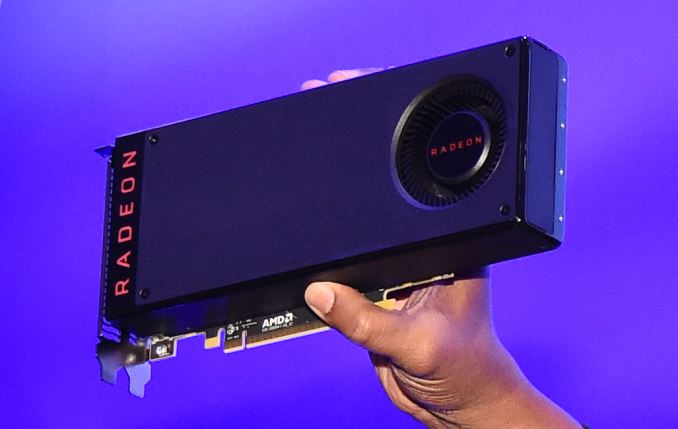
Kicking off at this moment is AMD’s Computex 2016 keynote. The company has multiple announcements scheduled this evening, but we’re going to jump right into an area that has been of extreme interest for many of our readers: GPUs.
Ahead of this evening’s event, AMD sent out an email to the press teasing the first of their discrete Polaris architecture based cards. Called the Radeon RX 480, AMD has unveiled much of the product’s specifications, but also its price and availability. When the card hits the streets on June 29th, it will be starting at the crucial mainstream battleground price point of $199.
| AMD Radeon GPU Specification Comparison | ||||||
| AMD Radeon RX 480 | AMD Radeon R9 390X | AMD Radeon R9 390 | AMD Radeon R9 380 | |||
| Stream Processors | 2304 (36 CUs) |
2816 (44 CUs) |
2560 (40 CUs) |
1792 (28 CUs) |
||
| Texture Units | (Many) | 176 | 160 | 112 | ||
| ROPs | (A Positive Integer) | 64 | 64 | 32 | ||
| TFLOPs (FMA) | >5 TFLOPs | 5.9 TFLOPs | 5.1 TFLOPs | 3.5 TFLOPs | ||
| Boost Clock | >1.08GHz | 1050MHz | 1000MHz | 970MHz | ||
| Memory Clock | 8Gbps GDDR5 | 5Gbps GDDR5 | 5Gbps GDDR5 | 5.5Gbps GDDR5 | ||
| Memory Bus Width | 256-bit | 512-bit | 512-bit | 256-bit | ||
| VRAM | 4GB/8GB | 8GB | 8GB | 2GB | ||
| Transistor Count | ? | 6.2B | 6.2B | 5.0B | ||
| Typical Board Power | 150W | 275W | 275W | 190W | ||
| Manufacturing Process | GloFo 14nm FinFET | TSMC 28nm | TSMC 28nm | TSMC 28nm | ||
| Architecture | GCN 4 | GCN 1.1 | GCN 1.1 | GCN 1.2 | ||
| GPU | Polaris 10? | Hawaii | Hawaii | Tonga | ||
| Launch Date | 06/29/16 | 06/18/15 | 06/18/15 | 06/18/15 | ||
| Launch Price | $199 | $429 | $329 | $199 | ||
First off, the RX 480 will include 36 CUs. If we assume 64 stream processors to a CU – the GCN standard – then this brings us to 2304 SPs. AMD has not named the specific Polaris GPU being used here, but given the CU count I believe it’s reasonable to assume that this is a Polaris 10 SKU, as I’ve already seen Polaris 11 and it’s a very small chip better suited for notebooks.
AMD also revealed that the card would offer over 5 TFLOPs of compute performance. Given what we know about the CU count, this allows us to estimate the GPU clockspeed. This puts the lower bound of the GPU clockspeed at 1.08GHz and an upper bound (6 TFLOPs) at 1.3GHz, which would be in the range of 10-30% higher clocked than comparable Radeon 300 series cards.
In terms of raw numbers this puts the RX 480 just shy of the current Radeon R9 390. However it also doesn’t take into account the fact that one of the major focuses for Polaris will be in improving architectural efficiency. I would certainly expect that even at the lower end of clockspeed estimates, RX 480 could pull ahead of the R9 390, in which case we’re looking at a part that would deliver performance between the R9 390 and R9 390X, with final clockspeeds and architectural efficiency settling just how close to R9 390X the new card gets.
On the memory front the card is equipped with 8Gbps GDDR5, running along a 256-bit memory bus. This is the typical bus width for AMD x80-series cards, and the high clocked 8Gbps GDDR5 means that we’re looking at a total of 256GB/sec of memory bandwidth to feed the RX 480’s GPU. AMD’s partners will be offering both 4GB and 8GB cards, and for the purposes of this teaser I assume that pricing information will be for the 4GB card, with 8GB serving as a premium option.
Finally, AMD has also revealed the TDP for the RX 480, stating that it will be a 150W card. As Polaris is built on 14nm FinFET, we’re seeing first-hand the benefits of finally making the long-awaited jump off of 28nm, as this means we’re looking at Radeon R9 390 series performance in a card that, on paper, consumes only a bit more than half the power. This also puts the RX 480 right in the sweet spot for mainstream cards, as 150W has traditionally struck a good balance between performance and power consumption that allows for a fast card that doesn’t require aggressive cooling, and is more compatible with OEM computer vendor case & cooling designs.
Cementing its place as a mainstream card, the RX 480 pricing will start at $199. This is an aggressive and heavily fought over price point that has traditionally defined the mainstream segment, attracting buyers who want great 1080p gaming performance that sub-$150 value cards can’t offer, without moving up to more expensive (and power hungry) $300+ cards. In this sense the RX 480 is a direct replacement for the R9 380, AMD’s Tonga-based card that hit the market roughly a year ago at the same price. Going by the raw numbers alone, RX 480 would be 40% (or more) faster than the R9 380.
Meanwhile I won’t speculate too much on the competitive market from a teaser, but it’s worth noting that this is nearly half the price of NVIDIA’s currently cheapest Pascal card, the GeForce GTX 1070. Interestingly both cards have the same 150W TDP, but looking at the throughput figures it does not look like RX 480 is meant to offer quite as high performance as NVIDIA’s card.
Moving on, along with teasing the RX 480’s specifications, AMD’s teaser also laid out their marketing plans for the card. We’re previously talked about how both Oculus and Valve/HTC were encouraging developers to treat VR like a fixed platform, and setting minimum hardware specifications to go along with that. On the AMD side those specifications called for a Radeon R9 290, which the RX 480 should be able to beat.
As a result AMD is planning on heavily promoting the VR aspects of the RX 480, as it brings the necessary performance down from a 250W, $300+ card to a 150W, $200 card. In fact AMD is claiming that VR performance will be closer to $500 video cards, in which case we’d be looking at performance closer to the Radeon R9 Nano, a Fiji based card.
With all of that said, the video card is just one component in the total price of a VR system – you still need the headset – but on the PC side it has also been the most expensive component. Consequently, AMD sees cheaper video cards that offer good VR performance as being important to bringing down the total price of a VR-ready system, and will be promoting the RX 480 as the prescription for entry-level VR needs. From a business perspective, AMD is ultimately expecting VR to be a fast-growing market, so the company wants to make sure they don’t miss out and have more VR-capable cards on the market as quickly as they can.
Along those lines, AMD’s release also makes note that at least one model will be “both HTC Vive Ready and Oculus Rift certified,” though no further details are being offered at this time. Whether this is just a certification matter or if there’s going to be something special about this model (e.g. connectors) is open to speculation.
Finally, now that they’ve revealed the price and much of the specifications of their first Polaris card, AMD is also releasing more details on their overall development and market positioning strategy with Polaris. As AMD has hinted at in the past, Polaris is being specifically developed for and aimed at the mainstream market. AMD wants to recapture lost market share – especially in laptops – and the large mainstream market is seen as the best way to do that. AMD is calling this their “water drop” strategy, and I expect we’ll hear a bit more about it tonight, including the meaning behind the name.
And with all of that said, it looks like we’re going to have a lot of AMD to talk about on June 29th. So until they, stay tuned.
Above: AMD SVP & Chief Architect Raja Koduri, Who Is Very Happy That Polaris Is About To Launch


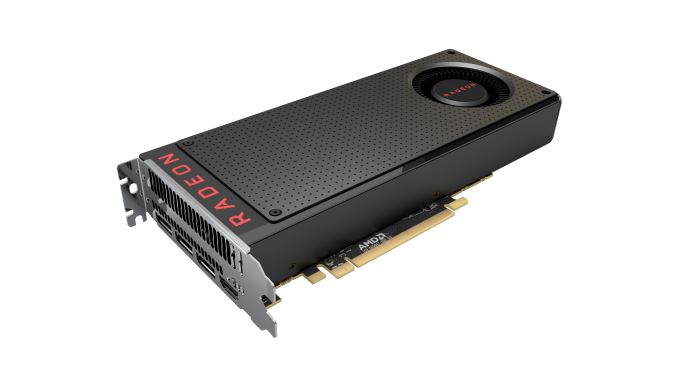

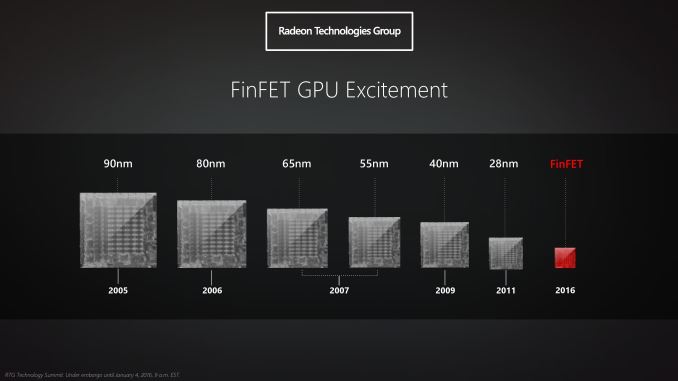
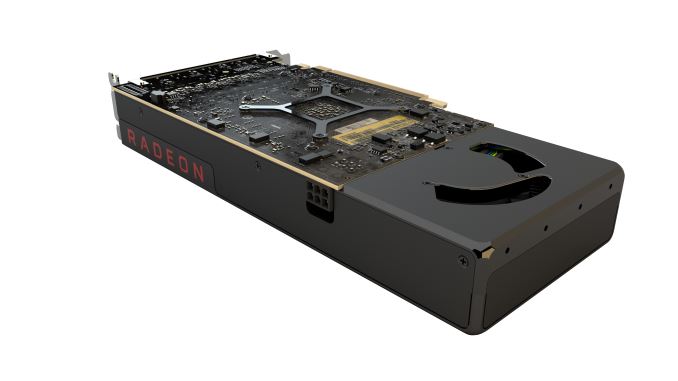




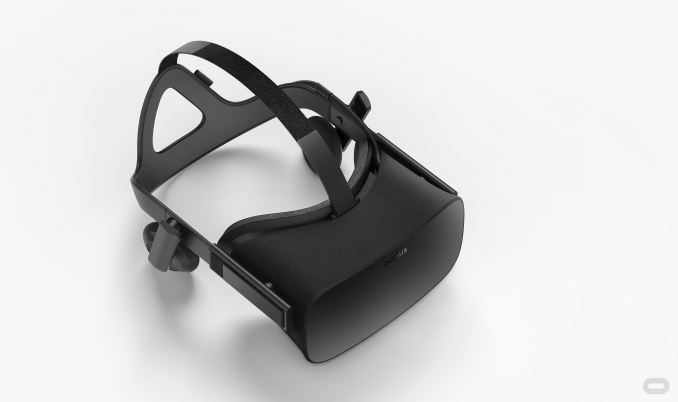









377 Comments
View All Comments
Michael Bay - Wednesday, June 1, 2016 - link
The PC mass market is commodized to the point of race for the bottom for basically everybody.Good luck finding money there.
hero4hire - Wednesday, June 1, 2016 - link
Comments like this are infuriating to me. "Good luck finding money there"So. Fking. What.
If AMD puts out a 480 (or 490) at a loss how do I, the consumer, lose? Are we all financial investors playing the market?
If some unknown 3rd party put out a card at $25 with open source drivers that delivered 5 tflops and bare minimum gaming support/features, I'd buy. When that company blows through $10B of investor money killing countless hedge funds through an unsustainable market presence; will I cry about their poor ROI?
I'm here as a consumer. Give me it all for free if you want. Lots of high margin items out there for you to buy and help those corporate bottom lines. Better hurry before there's a price drop!
CaptainDoug - Wednesday, June 1, 2016 - link
You don't have to be an investor to know AMD needs to regain some market share. Nvidia needs a competitor. Same with the AMD vs Intel battle. If AMD goes down, you'll be paying more for CPUs and GPUs.D. Lister - Wednesday, June 1, 2016 - link
Wrong. Intel and Nvidia (or any company that sells non-perishable/non-consumable goods) can only raise the price to a point where it is still viable for someone who already has an older model. Otherwise, they wouldn't make any new sales.If AMD was dead now, you think the GTX 1080 would have had an MSRP of $2,000? How would they convince someone who already has a 980Ti, or even a 780Ti for that matter, to part with two grands?
When AMD goes down, nothing would change in the world, except perhaps eventually normal people would not have to put up with AMD's fanbase anymore.
TheinsanegamerN - Wednesday, June 1, 2016 - link
Not release new drivers for older cards? That sounds like a very easy way to force people to upgrade.Also, it's been proven time and time again that a monopoly leads to higher prices. Every. Single. Time. The PC market is no different.
D. Lister - Wednesday, June 1, 2016 - link
@TheinsanegamerNA consumer GPU is an entertainment product, or rather a mere component of one, which not only has to compete with other brands in the same line of products, but also with the value provided by consoles/handheld/mobile, and even other forms of entertainment, like TV and movies.
JKay6969AT - Thursday, June 2, 2016 - link
@D. Lister You don't really get how competition works do you? Monopoly = Bad simple as that. In fact intel don't want AMD to fail, simply to be noncompetitive. If AMD dies then intel faces being broken into smaller companies to remove their monopoly. As long as AMD exists intel can claim it's a free market and there is no monopoly, even when their high end product prices reveal otherwise.I am not attacking you just pointing out the truth, this is not intel bashing or nVidia bashing or AMD bashing. It is simply the fact that where markets are competitive prices fall and innovation increases but while there is no or little competition the opposite is true.
I currently have an intel Core i7 4970K and a Radeon R9 290X. My last CPU was a Core i7 920 and my last GPU was an nvidia GTX 580.
I don't care which company makes my hardware, I simply care to get the best product for the best price that is suitable for purpose.
I will consider buying AMD Zen if it has benefits over intel, even if it's slower as the competing intel CPU as long as the price reflects this and the CPU is up to the task I require it for. The same goes for my next GPU, nVidia or AMD doesn't matter, price and performance relative to my needs is important, not brand loyalty.
D. Lister - Thursday, June 2, 2016 - link
"You don't really get how competition works do you? Monopoly = Bad simple as that. "And you obviously don't understand the word "monopoly" beyond being some sort of a scary monetary bogeyman. The state has monopoly on law enforcement and military, monopolies that are necessary and practical. Then there are natural monopolies that are actually beneficial. The point is not a direct comparison, but to make you realize the world isn't quite as much in black and white as you may like to think.
Secondly, in the grander scheme of things, a duopoly isn't really an immense improvement over a monopoly anyway.
"If AMD dies then intel faces being broken into smaller companies to remove their monopoly."
For heaven's sake, there is a big difference between having monopoly status, and actually being charged for abuse of monopoly. Intel could only be broken down at the demise of AMD, if it was proven in court that Intel was somehow directly responsible for AMD's bankruptcy.
READ, CAREFULLY... >>> http://www.economicsonline.co.uk/Market_failures/M...
Brek - Tuesday, June 7, 2016 - link
step away from the foilhat lister, you nvid fanboy.atlantico - Wednesday, June 1, 2016 - link
When Nvidia goes down, well be rid of the Nvidiots. Good times ahead.